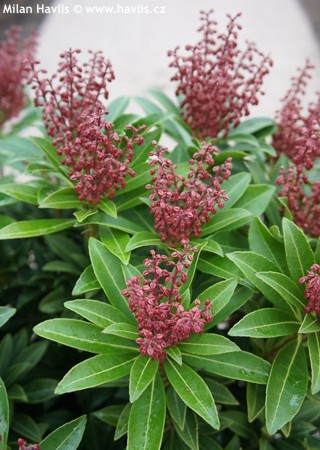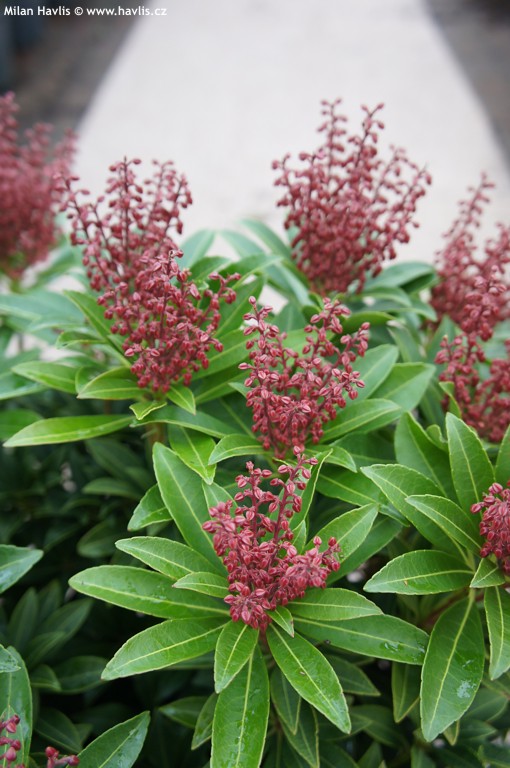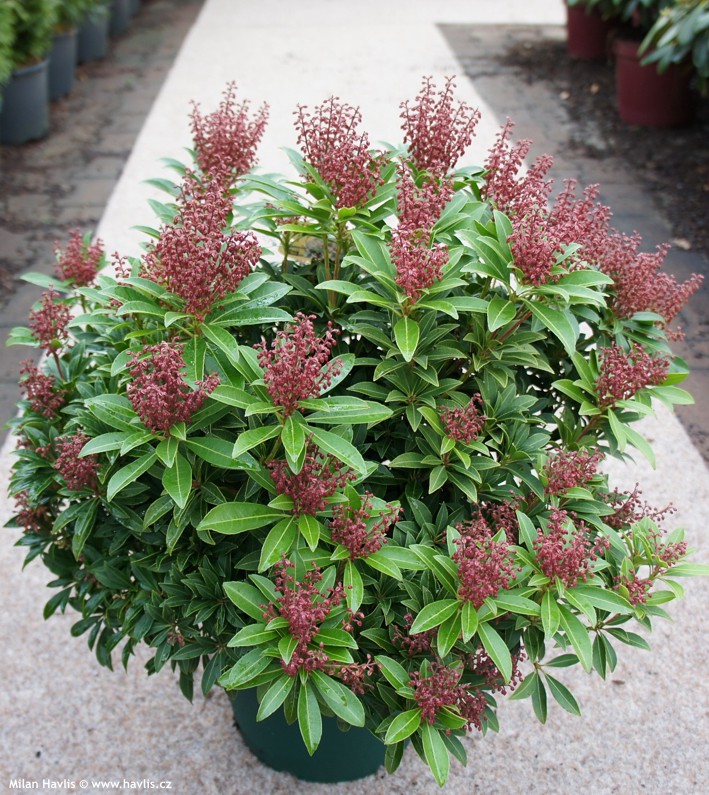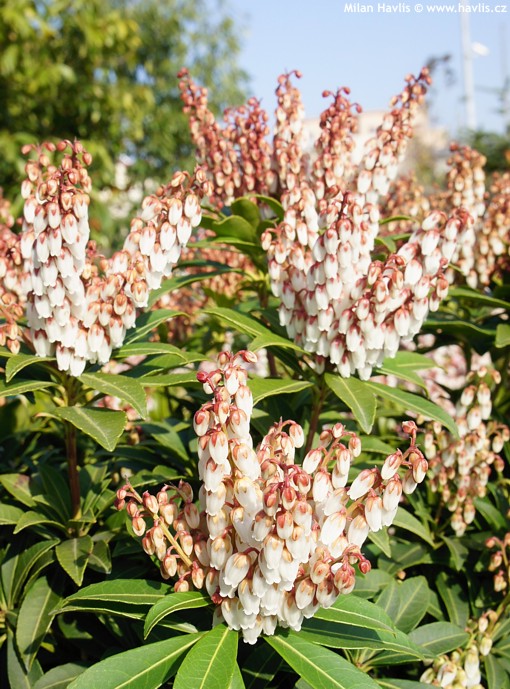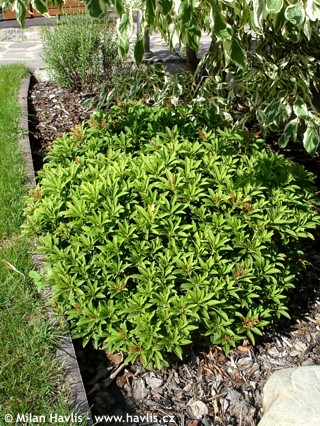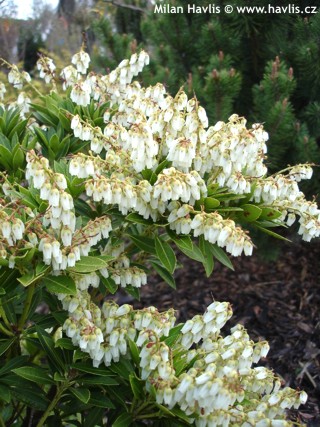Pieris japonica 'CUPIDO' Japanese pieris
size/type
small shrub,small shrub
usual height
0,3-0,6m
usual width
0,3-0,6m
leaves
evergreen broadleaf
colour of leaves
flowers
showy
colour of flowers
blooming time
March-April
location
full to partial sun
soil type
acidic (peaty)
soil moisture requirements
evenly moist (dislikes drought)
USDA zone (lowest)
5b (down to -27°C)
winter protection
for zone 5+6

for zone 7

categorized
Description of the plant:
Lily-of-the-valley shrubs are very popular ericaceous plants with attractive foliage and abundant flowering. Cupido is a compact variety which keeps its form without pruning and will fit even the smallest of gardens. Its evergreen leaves are short, narrowly elliptic with a pointed tip, deep green, and mat. In spring they emerge coppery red like photinias and mature only about 6 weeks later. This show repeats once or twice again throughout the season. Cupido is more attractive for its flower buds rather than flowering itself. They are produced on short, erect racemes from early summer the previous year and before winter they turn deep red. Lily-of-the-valley-like flowers are white, urn-shaped and nicely scented and attract bumble bees.
Pieris does not require much maintenance. But if you wish to have a perfect plant here are a few suggestions: dead head spent flower racemes to prevent them from making seeds. During late spring and summer check the leaves 2 or 3 times for tiny spots on the upper sides – they manifest insect attack whose miniature worms are living inside the leaves and produce sticky sap on the reverse sides. In such case spray it with a suitable insecticide – one dose is usually enough and it often helps you get rid of the insect for many years, even for good. In winter remove heavy and wet snow from the top of the plant to prevent its fragile branches from bending or breaking.
Ericaceous plants require soil that is light, acidic, and constantly moist (not wet). If your garden soil is too heavy do not dig a deep hole but make a raised bed topped up with a good mixture of peat, fine bark chips, and leaf (forest) litter. Keep the soil moist by mulching. Slow-release fertilizers for acid-loving plants are advised. Experienced hardiness is -27°C (USDA zone 5b).
Last update 15-12-2011
WANT TO TRY A SIMILAR PLANT?

































